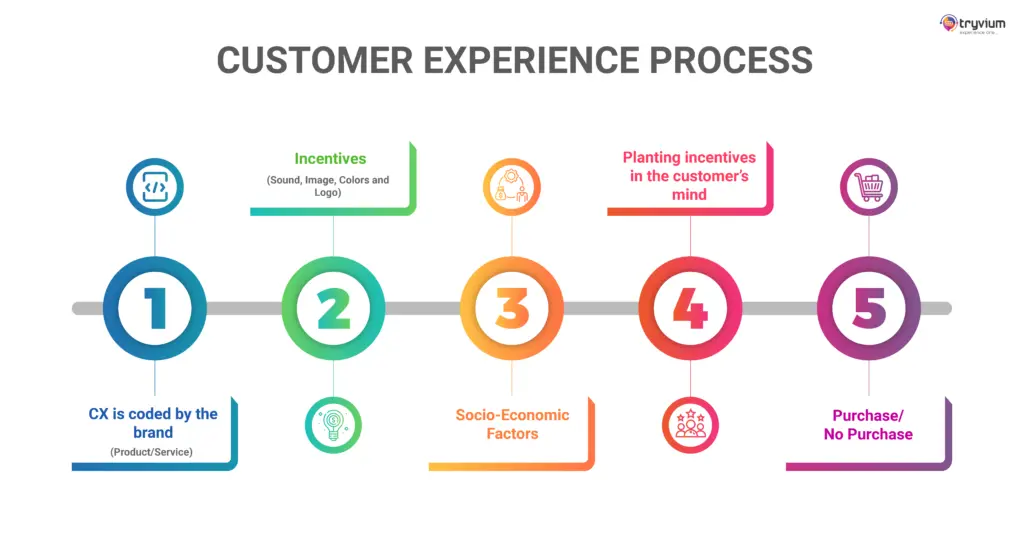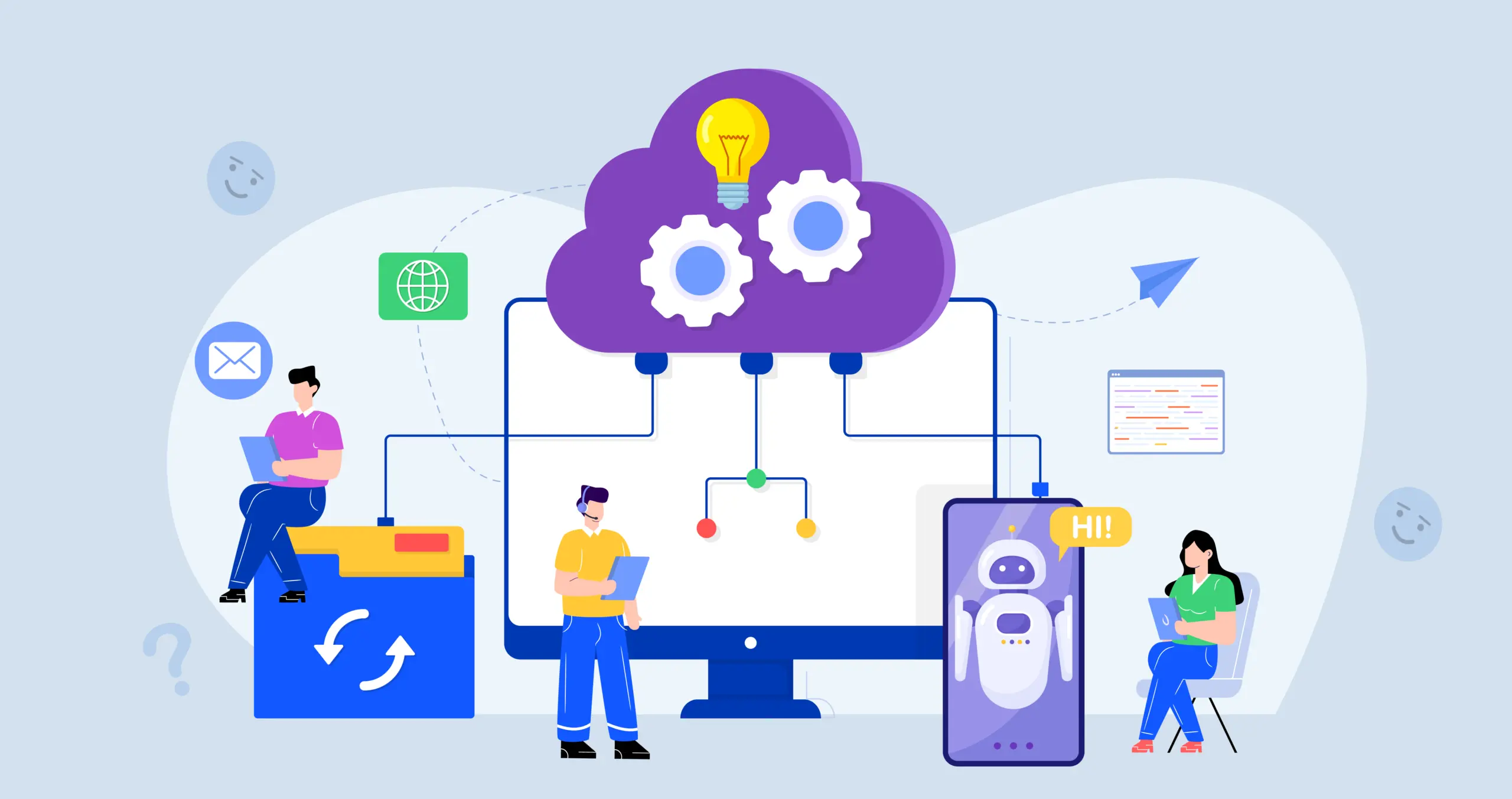In today’s hyper-connected world, customer experience (CX) has emerged as the main differentiator in a company’s outcome. Businesses face constant pressure as customer expectations grow to deliver consistent seamless and personalized experiences. Every touch point, be it online or off-line, does give rise to the perception a customer forms about a brand in the end. A fragmented experience can push away customers, while a unified customer experience builds loyalty, trust, and long-term success. In this blog, we will explore the importance of creating a Unified Customer Experience, how Customer Experience Management (CXM) plays a key role in this process, and the strategies, tools, and challenges businesses face in achieving it.
The Role of Customer Experience Management (CXM) in Achieving a Unified Experience
Customer Experience Management, or CXM, is actually the strategic practice of managing and optimizing a customer’s interactions with a brand over their entire journey-from becoming aware of the brand to post-purchase support. This ability to seamlessly manage interactions across different channels basically forms the basis for unity of customer experience; otherwise, customers will go on experiencing no disruption or frustration when they shift from one platform such as websites, emails, social media, or even in-store visits.
Thus, CXM lets businesses gain insights from the interaction, which means knowing about customers’ behavior and what they like and what hurts them. Well, with such insights, the strategy would be adjusted in a way that the customers could experience a customized and consistent experience. Therefore, if an organization could not build up an effective CXM framework, then undoubtedly the business would fail to meet the expectations of customers, and thus, the feeling of dissatisfaction along with lack of brand loyalty will ascertain.

Key Benefits of a Unified Customer Experience
Bringing a unified customer experience not only brings benefits for customers but also to businesses themselves. The core of those benefits runs along the lines of consistency across channels. Consistent experience from service, branding, and messaging erase friction and frustration among customers; it gives assurance that customers feel valued and understood.
There is personalization. With the integration of customer information from any number of interactions, businesses will be able to provide more customized experiences. For example, a consumer’s purchase history, preferences, and support queries can all be leveraged to tailor an experience, such that the consumer feels noticed and valued.
A holistic customer experience largely generates high customer retention. The more clients receive consistent service from a brand, the more they tend to cling to that brand. Studies have shown that companies with solid omnichannel customer engagement retain 89% of their customers, whereas companies with weak omnichannel customer engagement retain only 33% of their customers.
Lastly, a single approach to CXM encourages the operation to be efficient. It reduces the phenomenon of silos within a firm. A company is comprised of different sections that are usually sales, marketing, and customer care. This not only streamlines internal operations but also enables quicker decision-making, as teams have access to the same data and insights.
Strategies for Implementing a Unified Customer Experience with CXM
For the sake of fully cohesion customer experience, businesses must now build effective integration into their CXM practices. Strategic for now is omnichannel support, that will interlink all the customer-facing channels. This allows the customer to move between platforms, such as from social media to email, without losing the context of the previous interactions. Like a customer query that begins on social media should be carried over seamlessly to either email or live chat, without actually repeating the query for the customer.
Another core strategy for an all-inclusive experience is data integration. To make available a singular view for the customer, business houses need to collect and integrate the data related to each interaction through CXM tools. That would make insight even more specific, enable businesses to understand patterns and trends much better, and enhance the entire experience provided by businesses to their customers.
Customer journey mapping is one of the most crucial factors where businesses outline every step of the customer journey and identify all these touchpoints. Going through these channels then enables the company to work on areas that might be causing friction so as to ensure a smooth customer experience process is realized.
Additionally, leveraging the Voice of the Customer (VoC) is crucial for creating a seamless experience. Gathering and acting on customer feedback in real-time allows businesses to address pain points promptly, making continuous improvements to the overall customer journey.
Overcoming Challenges in Creating a Unified Customer Experience
Although unifying customer experiences has many rewards, there are also challenges. The commonest challenge will be the case of data silos, where most of the time, the customer data is kept in different departments or platforms, meaning a business cannot have a unified view. There is therefore the need for investment in technologies integrated enough to help combine various sources into a single view of customers 360 degrees for a business.
One significant challenge is misalignment in departments. Many teams have different goals, tools, and processes, which can be hard to achieve line-to-line integration in delivery of service to the customer. Overcoming this can be through encouraging a collaborative culture and aligning all departments toward achieving goals on customer-centric imperatives.
Technology is also a challenge in its own right, especially to businesses that lack the right tools needed to manage customer data efficiently. Various organizations may still rely on outdated systems that do not support real-time data or cross-channel integration. Investment in modern tools that ensure seamless CXM helps overcome these technological barriers.
Tools and Technologies that Support a Unified Customer Experience
To achieve a unified customer experience, businesses must leverage the right tools and technologies. Customer Relationship Management (CRM) systems are critical in centralizing customer data, allowing businesses to maintain a single, accurate view of each customer. This is the foundation of delivering consistent and personalized interactions.
Omnichannel platforms are also essential in maintaining consistency across communication channels. These platforms ensure that customers can switch between channels without experiencing any disruption in service. Additionally, personalization engines enable businesses to tailor interactions based on customer preferences and behavior, enhancing the overall experience.
Contact center software, especially those enhanced with automation, AI, and analytics, can significantly improve customer support across touchpoints. These tools help provide real-time solutions, empowering support agents to deliver more efficient and effective service. Automation tools can also streamline processes, such as sending follow-up emails or tracking customer queries, ensuring that nothing falls through the cracks.
The Future of Unified Customer Experience and CXM
As businesses look to the future, emerging technologies like AI-driven CXM and predictive analytics will play a transformative role in enhancing the unified customer experience. AI will allow businesses to offer hyper-personalized interactions in real-time, anticipating customer needs and providing proactive solutions before issues arise. For instance, AI-powered chatbots can assist customers instantly, offering personalized recommendations based on their previous interactions.
Predictive analytics will also help businesses forecast customer behaviors and trends, enabling proactive engagement strategies that improve customer satisfaction and loyalty. As CXM tools continue to evolve, they will further unify the customer experience by providing real-time insights and actionable data that drive better decision-making.
Conclusion
In today’s competitive market, a unified customer experience is essential for success. By seamlessly connecting every interaction across channels, businesses can enhance customer satisfaction, loyalty, and operational efficiency. At the core of achieving this goal is Customer Experience Management (CXM), which enables companies to design, track, and optimize each customer interaction. As businesses look to the future, it is critical to evaluate their current CXM strategies and invest in tools and practices that support a unified approach. Doing so will ensure a consistent, connected, and satisfying experience for customers at every touchpoint, driving long-term success and customer loyalty.
FAQ
What is Unified Customer Experience?
A unified customer experience ensures seamless and consistent interactions across all channels, whether online or offline. It integrates multiple channels, and data from previous customer interactions to provide personalized responses, building trust, loyalty, and satisfaction.
How does Customer Experience Management (CXM) support unified experiences?
CXM strategically manages customer interactions, providing insights to create personalized responses across multiple channels like websites, emails, in-store visits, etc.
What challenges do businesses face in unifying customer experiences?
Common challenges include data silos, departmental misalignment, and outdated technology. These issues hinder the seamless integration of customer interactions and insights.
What are the tools used for achieving a unified customer experience?
Tools like CRM systems, omnichannel platforms, personalization engines, and AI-powered contact center software streamline data and improve customer engagement.

















